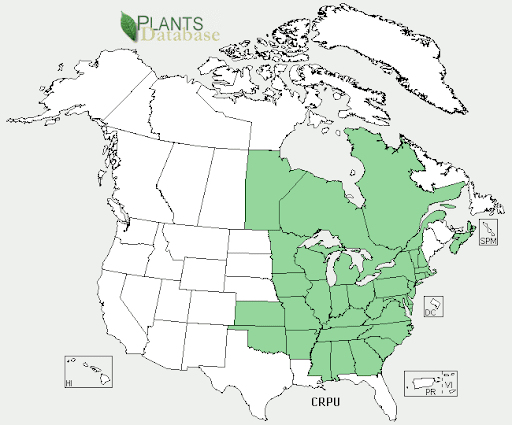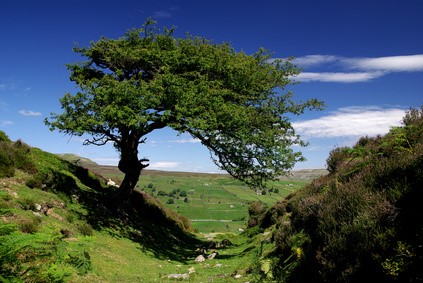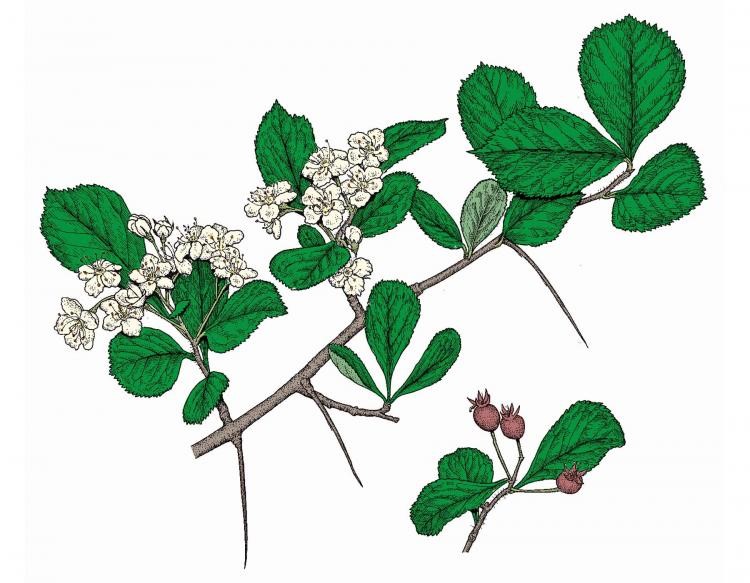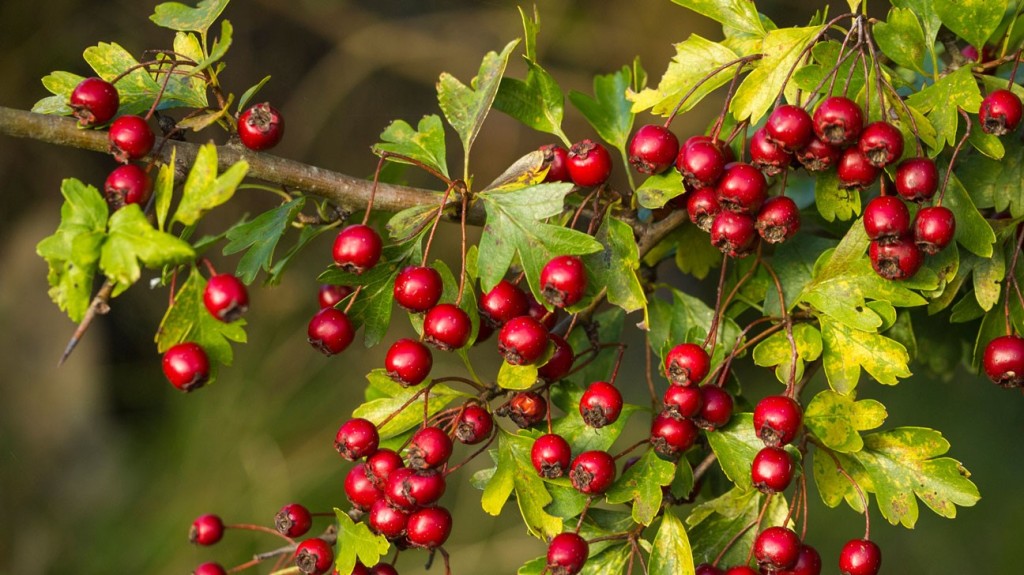Hawthorn (Crataegus)
The Hawthorn tree is native to temperate regions of Europe, Asia, North Africa, and North America.

The Hawthorn tree is a shrub or small tree that grows from 15 to 50 feet. The ideal environment for the Hawthorn tree is well-drain and loamy soil that retains moisture well, but it is adaptive and can survive in a variety of environments including urban settings. They can live for up to 400 years and is often used as an ornamental tree for the flowers it produces in the spring. There are many species of Hawthorn and the common Hawthorn can be traced back to 3rd century France. There are also fossils that are from 140-170 million years from North America, which shows the longevity of this species. The Hawthorn produces an apple-like fruit that can be made into jams, candy, and wine.

The leaves of the Hawthorn have 3 to 5 deep lobes and a glossy finish that helps retain water. They are deciduous and lose their leaves in the fall after turning a yellow color. The leaves are simple and alternate with toothed edges. If the leaves are picked early enough in the spring, they are edible. As suggested by the name, the Hawthorn has small thorns on its branches that are usually around 1 to 3 centimeters long. The branches are opposite, and the twigs are not symmetrical. The bark has gray and shallow fissures with narrow ridges that develop as the tree matures. When they are young, the bark is smooth and a lighter gray. The wood of this tree is hard and has fine graining, so it is popular to use in furniture. The wood also can burn steadily at high temperatures, so it is used as charcoal to cook.

The flower of this tree that emerges is spring are usually white or a light pink with five petals. The trees are also hermaphrodites and have male and female organs and flower in April and May. The flowers have a strong scent that can be noted during their peak months. The stamen (male reproductive organ) often takes on a pink hue at the anther, which contains the flower, and the pistil (female reproductive organ) is a light green color and emerges from the center of the flower as seen below.

The fruit it produces is green at first but turns red as it matures. The fruit is called the haw and are often called berries due to their size but are actually pomes like an apple or pear. The fruit usually emerges in the months of September to October and can remain on the tree in clusters during the winter. They have a tart and sweet taste that is enjoyed by many birds, which serve as dispersion vectors of the seeds. Though humans can eat the fruit raw, it can cause stomach problems, so it is best to make them into jams or even ketchups. Medicinally, this pome is currently though to have some impact of helping with heart and blood pressure issues, but research has been inconclusive. On the digestive side, people will use the Hawthorn pome to treat indigestion, diarrhea, stomach pain, and even to treat tapeworms.

The Hawthorn is known as, “mînesaga wûnj” or berries and thorn bush by the Ojibwe tribe that inhabited Minnesota and Wisconsin. The fruit and bark were used as for medicine for women (this could mean it aided with menstrual cramping), and some reported using berries for the astringent properties as well as to help heart problems. Women used the sharp thorns on the hawthorn for sewing awls onto work like buckskin or sinew. It was also used to make a deer scent that could be smoked while hunting to attract deer.
